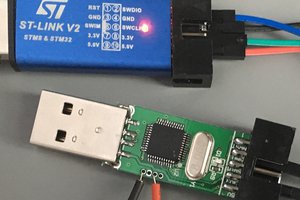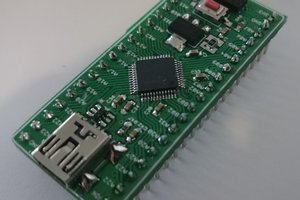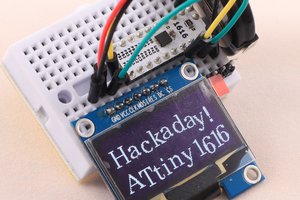Features
- a USB device port with cable shield filtering and transient suppression
- a 3.3V LDO with bypass caps and filters to separate analog VDD from digital VDD
- a 32.768 KHz crystal for the master clock
- a reset pushbutton with debounce cap and pullup resistor
- a blue LED on pin 13 for the classic Blinky test
- PDIP-28 package compatible (+ VBUS pin available on one side)
- the ATSAMD21E18 in QFN package
- firmware based on the Arduino Zero core
Licences
- HACK hardware is OSHW, licensed under CERN OHL 1.2
- HACK software is LGPL 2.1 (because it's based on the Arduino Core)
Installation
- Download Arduino IDE >= version 1.6.8
- Go under File->Preferences...
- Add the following URL to Additional Boards Manager URLS:
http://mickmad.github.io/hack/package_had-mickmad_samd_index.json
- Go under Tools->Boards->Boards manager...
- Select HACK - HackAday Cortex Kit - SAMD21E by Hackaday / Michele Perla and press Install
NOTE for Windows users: When you plug the board in your USB socket, Windows will fail to install its drivers; this will happen twice: the first time you use it in Bootloader mode, and the first time you use it in Sketch mode. When this happens, please click on Start, right-click on Computer, select Properties, then select Device Manager from the left-side menu of the newly opened window, then find an Unknown Device, double-click on it, go under the Drivers tab, and click on Update driver..., click Browse my computer for driver software, click Let me pick from a list of device drivers on my computer and then click Have Disk, then in the Install From Disk dialog box, click Browse, and go to C:\Users\your-username\AppData\Local\Arduino15\packages\had-mickmad\hardware\samd\1.0.0\driversand select the hack.inf file, then finally accept the warning that the driver is not signed.
TO DOs / MAYBEs:
- Fix the bootloader double tap feature to be more reliable
- Implement a bootloader pin that when grounded turns on the bootloader
- I2S support
- Adapt #Teensy Audio Library to work with the Arduino Zero/HACK Core
- Any suggestion? Write me up!
 Michele Perla
Michele Perla






 jurc192
jurc192
 gertux
gertux
 Alex
Alex
 Sander van de Bor
Sander van de Bor
Hey Michele, your board was featured quite prominently in my video:
I hope that's OK. I also opened a pull request a while back to let your project be included on kitnic.it from your repo direct, not sure if you saw that. https://github.com/MickMad/HACK/pull/2